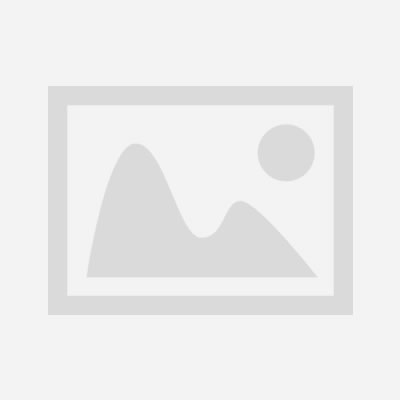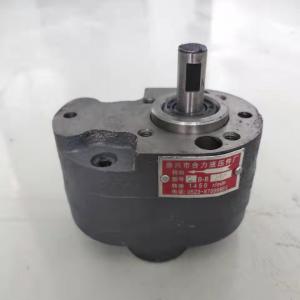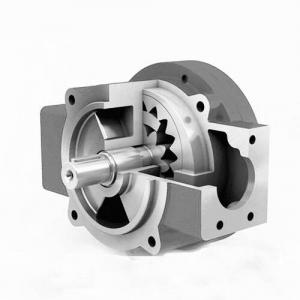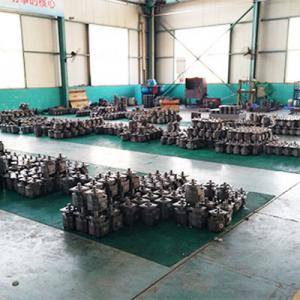Hydraulic Gear Pump Fault Repair, Take You Up Knowledge
Hydraulic Gear Pump Fault Repair, Take You Up Knowledge
With the growth of use time, the gear pump in the hydraulic system will appear pump oil shortage, or even pump oil and other faults, the main reason is that the relevant parts of the wear is too large.Gear pump wear parts are mainly driven shaft and bushing, passive gear center hole and shaft pin, pump shell cavity and gear, gear end face and pump cover.When the main technical indicators of the lubricating oil pump are not up to the requirements after wear, it should be disassembled and decomposed, and the wear parts and degrees should be found out, and the corresponding measures should be taken to repair.Let's have a look with the hydraulic system manufacturers!
一. Drive shaft and bushing repair after wear
Gear pump drive shaft and bushing wear, with the increase of clearance, will affect the pump oil.In this case, the drive shaft or bushing method can be used to restore its normal fit clearance.If the drive shaft wear is slight, only need to press out the old bushing after replacing the bushing of standard size, fit clearance can be restored to the allowable range.If the drive shaft and bushing wear serious and with the clearance seriously exceed the standard, not only to replace the bushing, and the drive shaft is also applied chrome plating or vibration surfacing method to increase its diameter, and then grinding to the standard size, restore and bushing with the requirements.
Hydraulic gear pump
二. Lubricating oil pump shell repair shell crack repair: shell crack can be cast 508 nickel copper electrode welding repair.The weld seam must be close and the element porosity, and the flatness error of the joint surface with the pump cover is not greater than 0.05 mm.
Drive shaft bushing hole and driven shaft hole wear repair: active shaft bushing hole wear, can be hinged to eliminate the wear trace, and then with increased to the corresponding size of the bushing.Driven shaft hole wear is also hinged to eliminate wear marks, and then the driven shaft is prepared according to the actual size of the hinged hole;
Repair of pump housing inner cavity: after the pump housing inner cavity is worn, it is generally repaired by inner cavity inlaying method, that is, after the inner cavity is filled out, it is inlaid with cast iron or steel bushing.After inserting the sleeve, line the inner cavity to the required size, and grind off the bushing extending out of the end face so that it is flush with the joint surface of the pump housing.
Repair of valve seat: there are two kinds of pressure limiting valve: ball valve and plunger valve.After the ball seat is worn, a steel ball can be placed on the seat, and then gently hit the ball with a metal bar until the ball valve is tightly closed to the seat.If the valve seat wear is serious, can be hinged to remove the wear marks, and then use the method to make it close.After the plunger seat is worn, a little valve sand can be added for grinding until it is tight.
三. Repair of pump cover
Repair of the working plane: if the pump cover working plane wear is small, manual grinding method can be used to eliminate the wear trace, that is, put a little valve sand on the platform or thick glass plate, and then put the pump cover on the top of the grinding, until the wear trace is eliminated and the working surface is smooth.When the pump cover working surface wear depth of more than 0.1 mm, should take the first turning after grinding method repair.
Active shaft bushing hole repair: the pump cover on the active shaft bushing hole wear repair and shell active shaft bushing hole wear repair method is the same.
四. The gear is turned over for use
Gear pump gear wear is mainly in the thick part of the tooth, and the wear of gear end face and tooth top are relatively light.Gear in tooth thickness parts are unilateral wear, so the gear can be turned 180 degrees to use.When the gear end face is worn, the end face can be ground flat, and the lubricating oil pump shell joint surface can be ground to ensure that the clearance between the gear end face and the pump cover is within the standard range.



